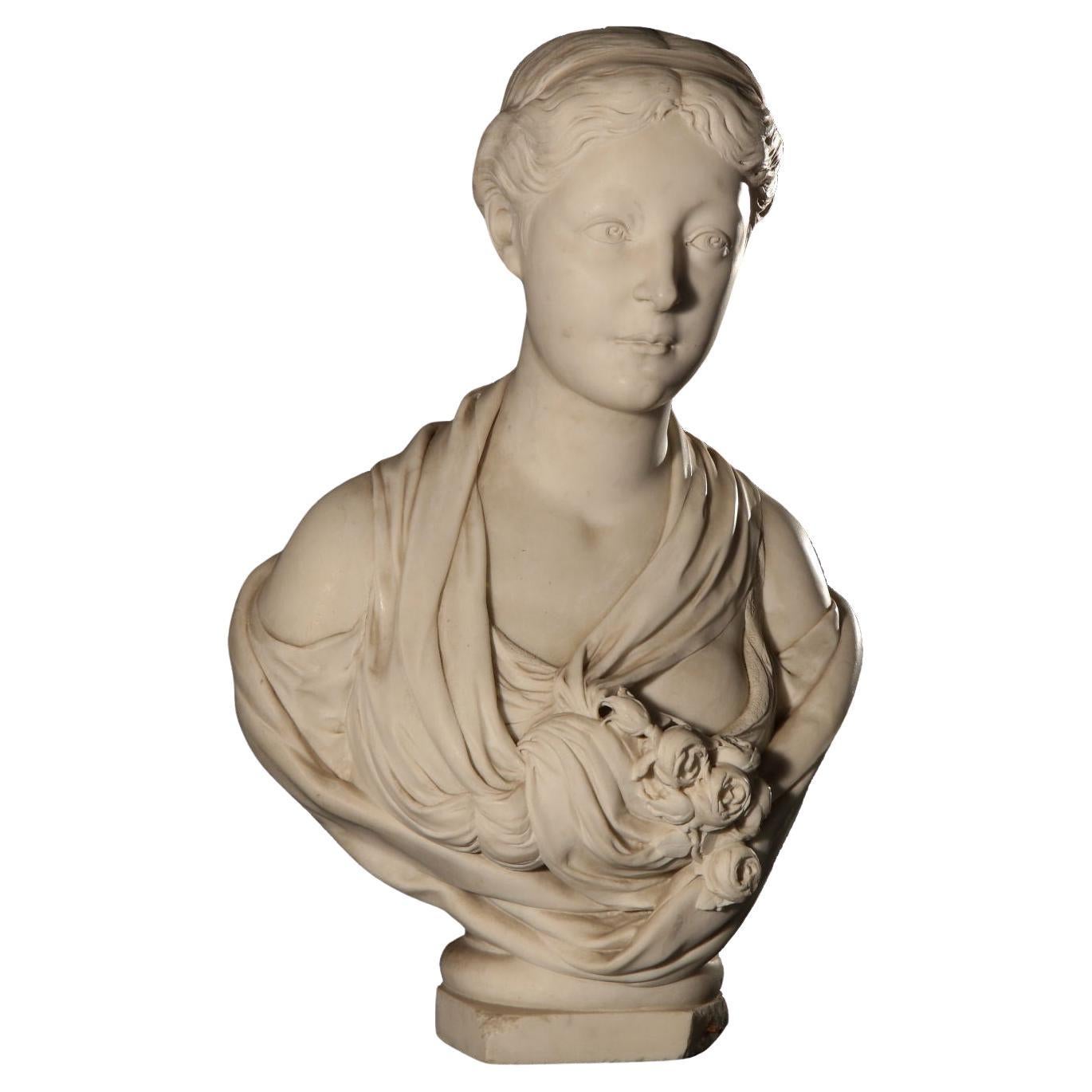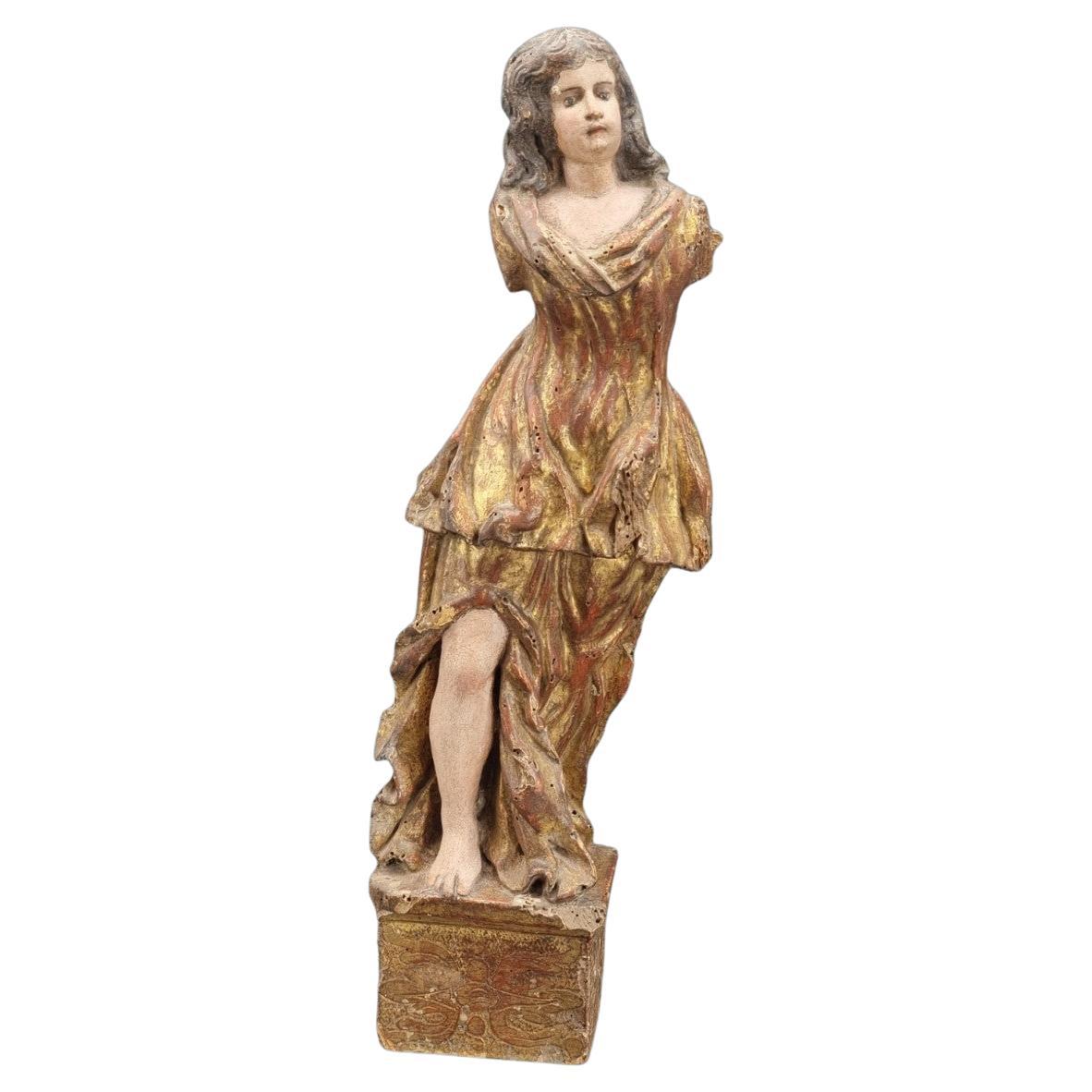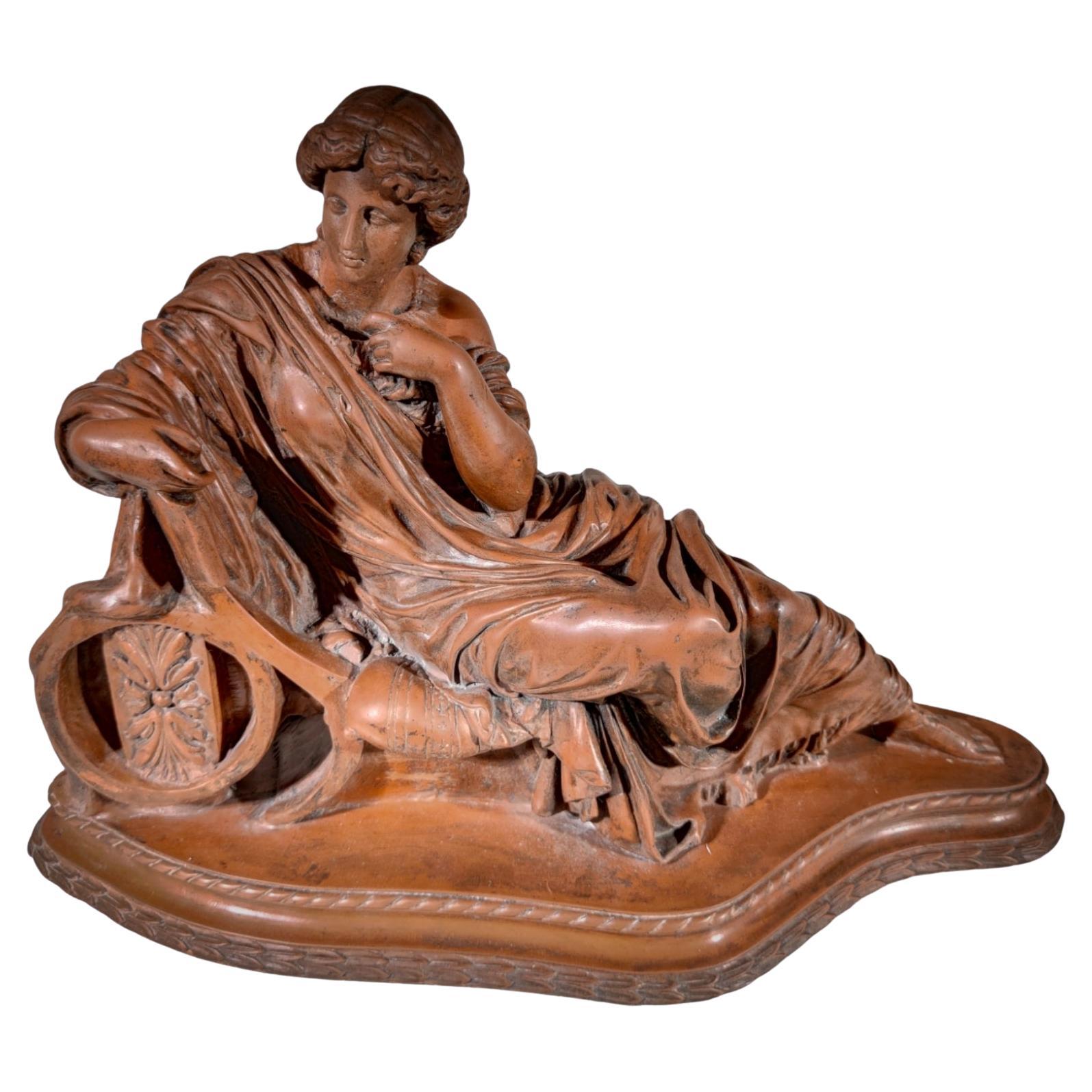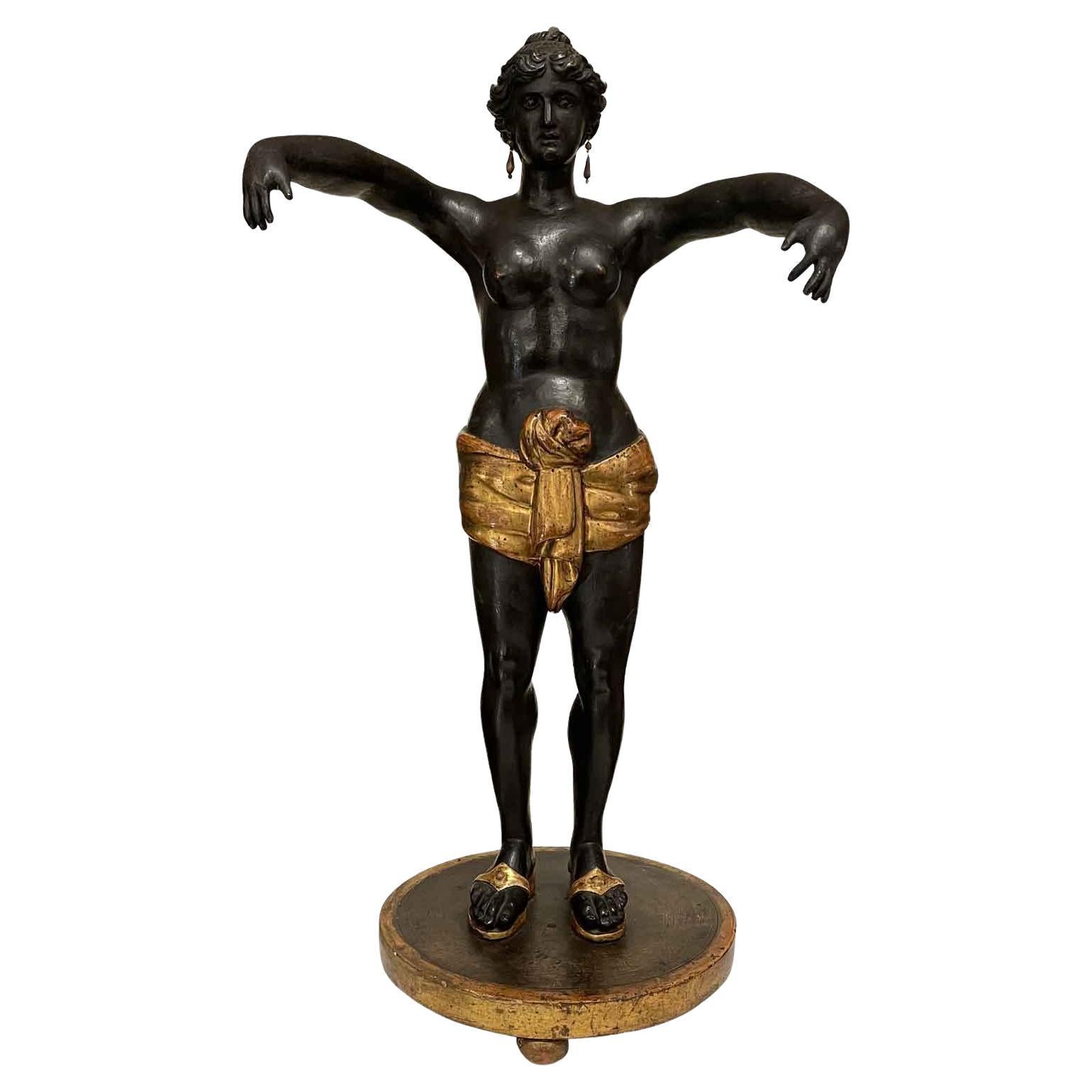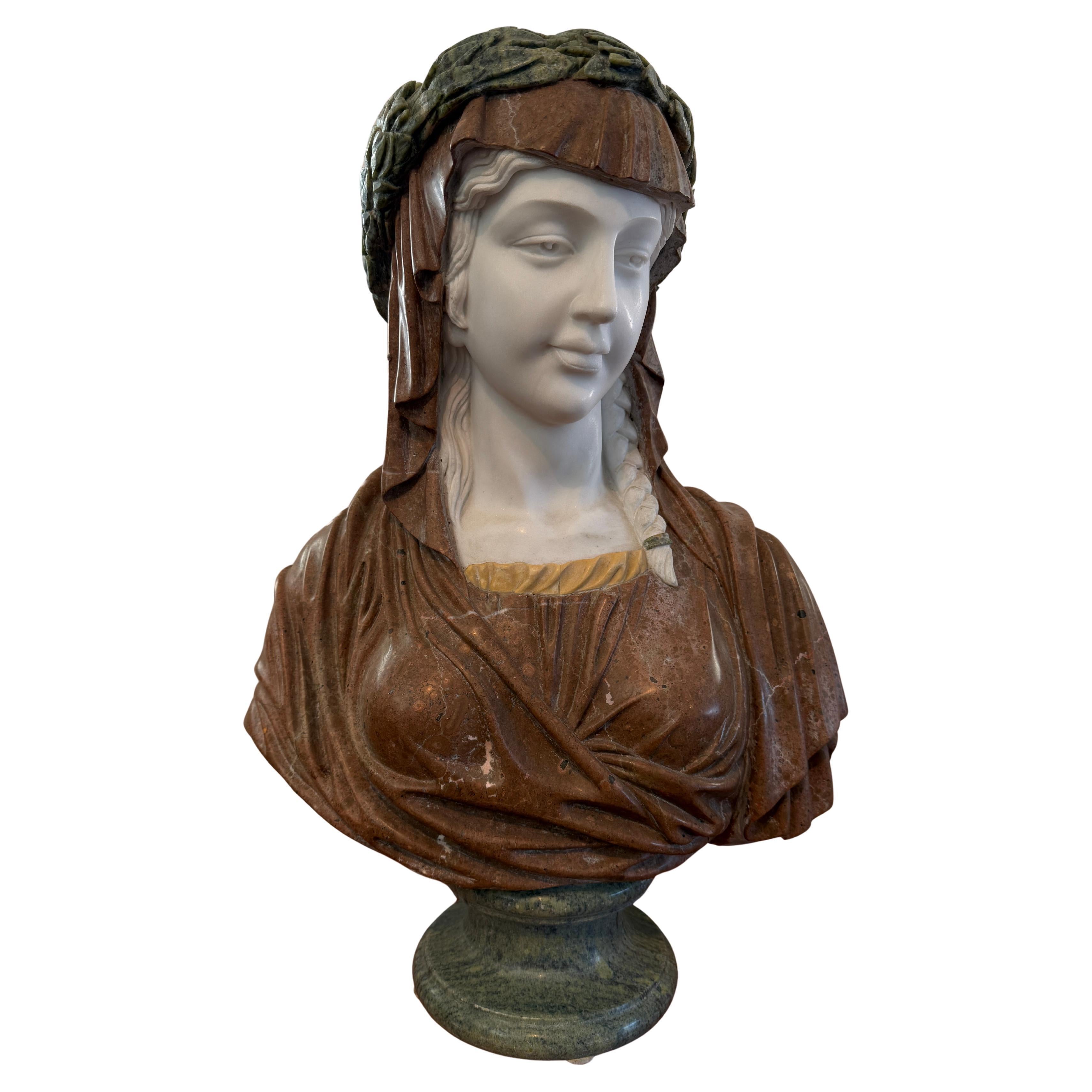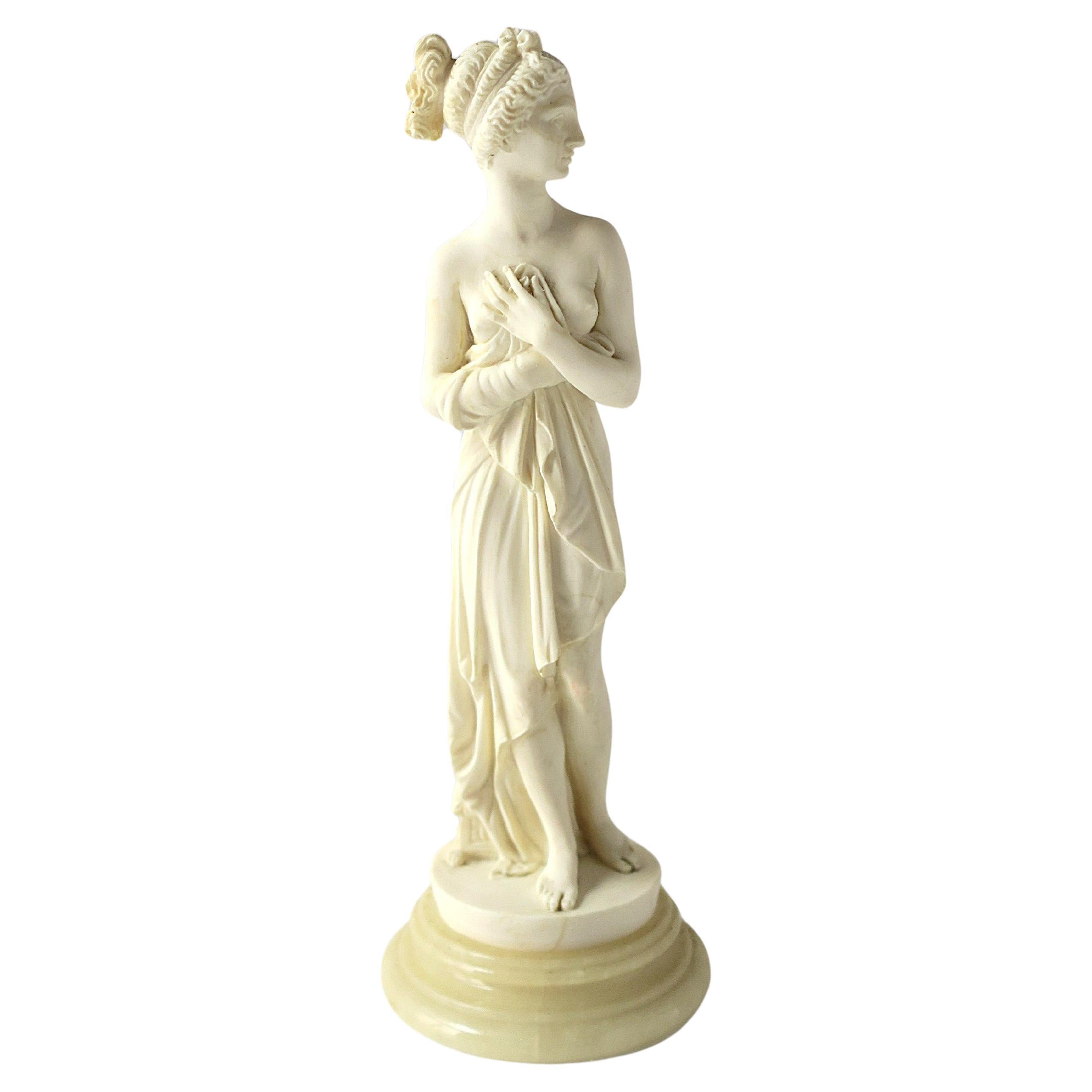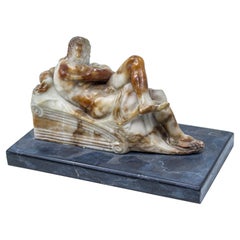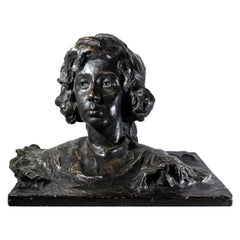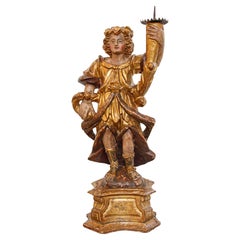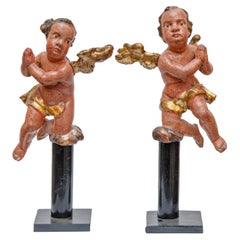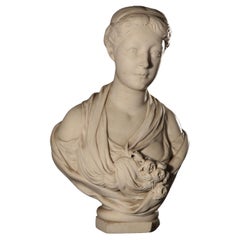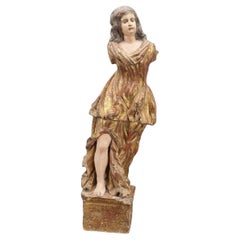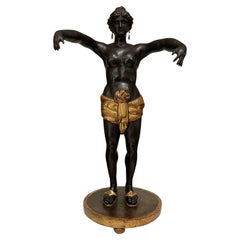Items Similar to German ceroplast from the 17th century, Bust of a woman
Want more images or videos?
Request additional images or videos from the seller
1 of 11
German ceroplast from the 17th century, Bust of a woman
$3,418.01
£2,574.44
€2,900
CA$4,713.58
A$5,295.49
CHF 2,766.90
MX$64,633.96
NOK 35,131.58
SEK 33,068.98
DKK 22,073.70
About the Item
German ceroplast from the 17th century
Bust of a gentlewoman
Wax, 36x32.5 cm
The use of making wax figures was very common, since ancient times, among the Greeks and Romans, and, as far as we have less evidence of it, also among the Egyptians and the peoples of earlier Asia. In the Middle Ages and modern times, wax was used by sculptors to model figures or objects to be cast in metal, to sketch works to be developed later into larger proportions, and finally as the actual sculpting material to cast or model figures in the round or bas-reliefs. Numerous examples have been preserved of wax sketches, including those by the hands of distinguished artists: that of Michelangelo's David (Florence, Buonarroti Gallery) and several of other figures, that of Cellini's Perseus (Florence, Bargello National Museum), that of Baccio Bandinelli's Hercules and Cacus (Berlin, Kaiser Friedrich Museum), those of Ferdinand I de' Medici (Berlin, Kaiser Friedrich Museum), and two reliefs of the Passion by Giambologna (London, Victoria and Albert Museum). As an actual sculptural material, wax served primarily for portraiture, whether for funerary figures that were displayed during honors rendered to the bodies of sovereigns or otherwise illustrious figures, votive figures, or finally for actual portraits. The use of funerary figures in colored wax and covered with sumptuous vestments is attested at least as early as the mid-14th century, at the courts of France and England, and also at the republic of Venice: eleven of those figures are still preserved in Westminster Abbey, and in the treasury of San Rocco in Venice the head of Doge Alvise IV Mocenigo. With the 16th century, ceroplastics also produced works independent of votive or funerary significance, and portrait-medallions were especially common, especially by Italian artists, such as Cellini, Leone Leoni, Alfonso Lombardi, Pastorino da Siena, Francesco Segala, and Abondio, which were also very much in vogue across the Alps. It is precisely to this latter case history of wax use in the artistic sphere that this artifact turns out to be ascribable. By shaping the unusual material, the ceroplast brings to life a fascinating female bust. The woman portrayed, with her elaborate hairstyle and exquisite jewelry parure, sensually displays both breasts: her body appears to be only partially covered by a red drape, the silky texture of which is expertly rendered in rich detail.
- Dimensions:Height: 12.6 in (32 cm)Width: 14.18 in (36 cm)Depth: 3.94 in (10 cm)
- Style:Other (Of the Period)
- Materials and Techniques:
- Place of Origin:
- Period:
- Date of Manufacture:XVII Century
- Condition:Wear consistent with age and use.
- Seller Location:Milan, IT
- Reference Number:1stDibs: LU5918245123152
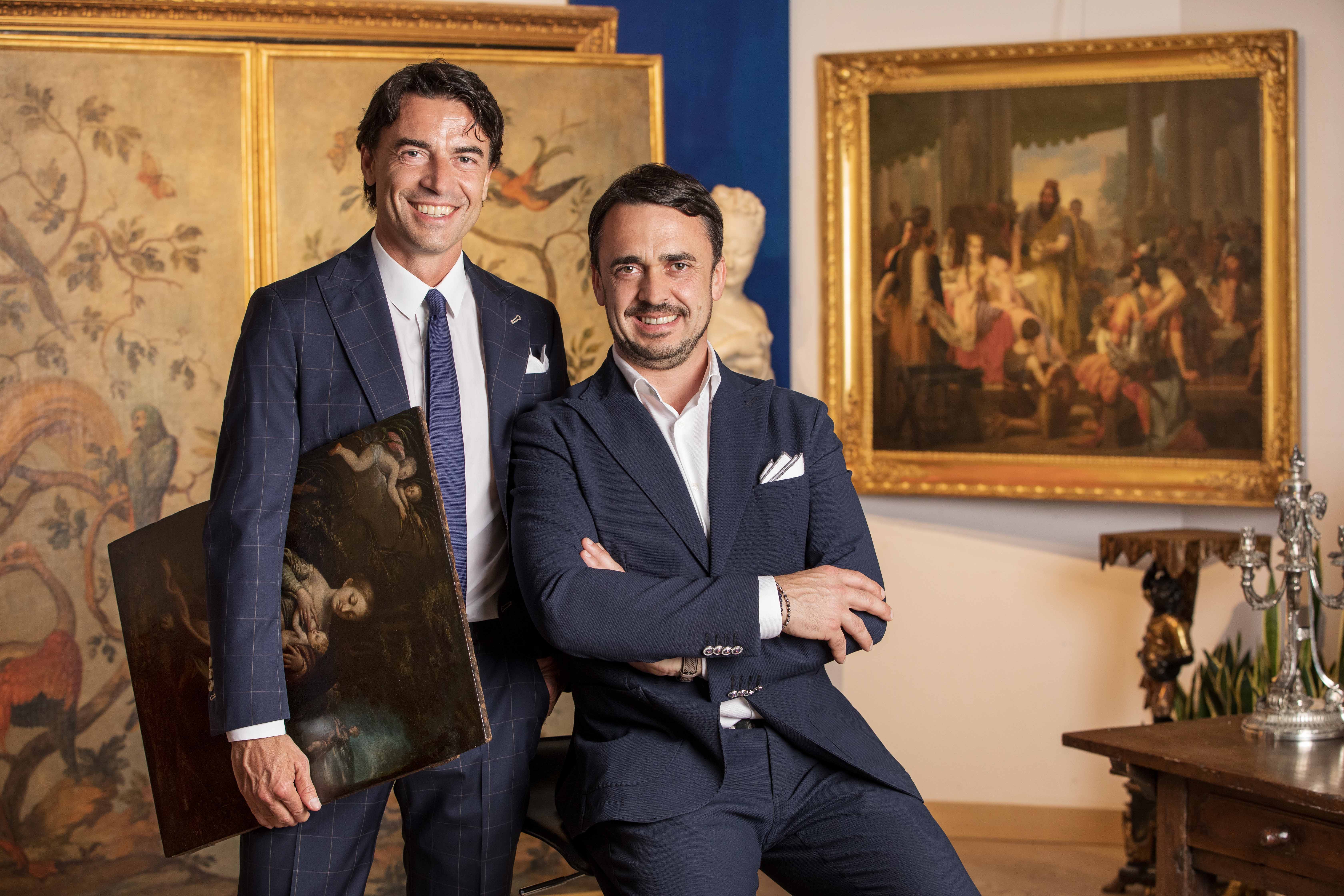
About the Seller
5.0
Vetted Professional Seller
Every seller passes strict standards for authenticity and reliability
Established in 2000
1stDibs seller since 2021
30 sales on 1stDibs
- ShippingRetrieving quote...Shipping from: Milan, Italy
- Return Policy
Authenticity Guarantee
In the unlikely event there’s an issue with an item’s authenticity, contact us within 1 year for a full refund. DetailsMoney-Back Guarantee
If your item is not as described, is damaged in transit, or does not arrive, contact us within 7 days for a full refund. Details24-Hour Cancellation
You have a 24-hour grace period in which to reconsider your purchase, with no questions asked.Vetted Professional Sellers
Our world-class sellers must adhere to strict standards for service and quality, maintaining the integrity of our listings.Price-Match Guarantee
If you find that a seller listed the same item for a lower price elsewhere, we’ll match it.Trusted Global Delivery
Our best-in-class carrier network provides specialized shipping options worldwide, including custom delivery.More From This Seller
View All18th Century Personification of the Day Alabaster Sculpture
By Michelangelo Buonarroti
Located in Milan, IT
18th century
Personification of the Day
Alabaster, cm 11.5 x 17.5 x 5
With base cm 14.5 x 20,8 x 11.7
Il Giorno is a marble sculpture (160x150 cm) that Michelangelo mad...
Category
Antique 18th Century Figurative Sculptures
Materials
Alabaster
19th Century Young Woman Portrait Plaster Sculpture
Located in Milan, IT
Nineteenth century
Young woman portrait
Measures: Plaster, 50 x 40 x H 40 cm
Dated 10 - 1 - MCMI
The emergence of a "disheveled manner" in sculpture is affirmed since the 1880s with Giuseppe Grandi, author of the Monument to the Five Days of Milan, Ernesto Bazzaro, Paolo Troubetzkoy...
Category
Antique 19th Century Italian Figurative Sculptures
Materials
Plaster
17th century, Angels reccicero
Located in Milan, IT
XVII Century
Angels reccicero
(2), Gilded wood, am alt.62
Category
Antique 18th Century and Earlier Other Figurative Sculptures
Materials
Wood
18th century, Pair of angels
Located in Milan, IT
18th 18th Century
Pair of little angels
Polychrome wood, cm h 25
Category
Antique 18th Century and Earlier Italian Other Figurative Sculptures
Materials
Wood
$2,592 / set
Lion Marble sculpture from the 17th century
Located in Milan, IT
XVII Century
Lion
Marble, 30 x 43 x 25
The object under consideration is configured as a marble sculpture referable to the 17th century, characterized by a strong, visceral langua...
Category
Antique 17th Century Italian Animal Sculptures
Materials
Marble
20th Century Reclining Woman with Sphinx Sculpture Alabaster
Located in Milan, IT
20th Century
Reclining woman with Sphinx
Alabaster, 43 x 60 x 25 cm
The sculpture depicts a young and charming odalisque lying languidly on a refined sheet. The face with d...
Category
20th Century Italian Figurative Sculptures
Materials
Alabaster
You May Also Like
Spring marble bust, first half of the 19th century
By Non-Standard Furniture and Lighting
Located in Milano, IT
Female bust of maiden with bouquet of roses ( Spring). The maiden is portrayed with a slight smile and a deep, attentive gaze, combed with a low chignon and hair lightly held back by...
Category
Antique Mid-19th Century Italian Other Busts
Materials
Marble
Polychrome and gilded wooden sculpture, northern Italy, early 18th century
Located in Vicenza, IT
Evocative wooden sculpture depicting a female figure, probably a Magdalene, made in the northern Italian area in the early 18th century. The work, carved in wood, gilded, and polychr...
Category
Antique 18th Century European Baroque Figurative Sculptures
Materials
Wood
Large Decorative 19th Century Sculpture
Located in Madrid, ES
Large decorative 19th century sculpture
Large decorative 19th century sculpture. In very good condition with no repairs. Measurements: 50x37x25 cm
Category
Antique Late 19th Century Figurative Sculptures
Materials
Terracotta
Goddess Circe Italian Neoclassical Sculpture Early 1800s Carved Ebonized Re-gilded
Located in Milano, MI
Circe Italian Neoclassical Sculpture of Early 1800s the figure is a fascinating depiction of the Goddess Circe, made in Italy in the early 19th century. The pine wood carving and ebo...
Category
Antique Early 19th Century Italian Neoclassical Figurative Sculptures
Materials
Hardwood, Pine
Marble bust depicting religious woman, 20th century
By Mice di rugiano domenico e c. s.n.c.
Located in Cantù, IT
Marble bust depicting religious woman, 20th century
Category
20th Century Italian Other Busts
Materials
Marble
Italian Neoclassical Female Sculpture Statue
Located in New York, NY
An Italian reproduction female resin and alabaster marble statue, in the Neoclassical design style, circa mid to late 20th century, Italy. Statue is an off-white/antique white resin ...
Category
Mid-20th Century Italian Neoclassical Figurative Sculptures
Materials
Alabaster
More Ways To Browse
Antique Parure
Antique Votive
Rosso Francia
Michelangelo Buonarroti
Tondo 18th Century
Early Capodimonte
Mercie Bronze
Nike Goddess
Our Lady Statue
Ralph Brown Sculptures
Sculpture Ariadne
Shop Mannequin
Wooden Articulated Hand
Antique Fire Hat
Australian Wood Carving
Bonsai Tree Sculpture
Europa And Bull
Lladro Figurines Used
